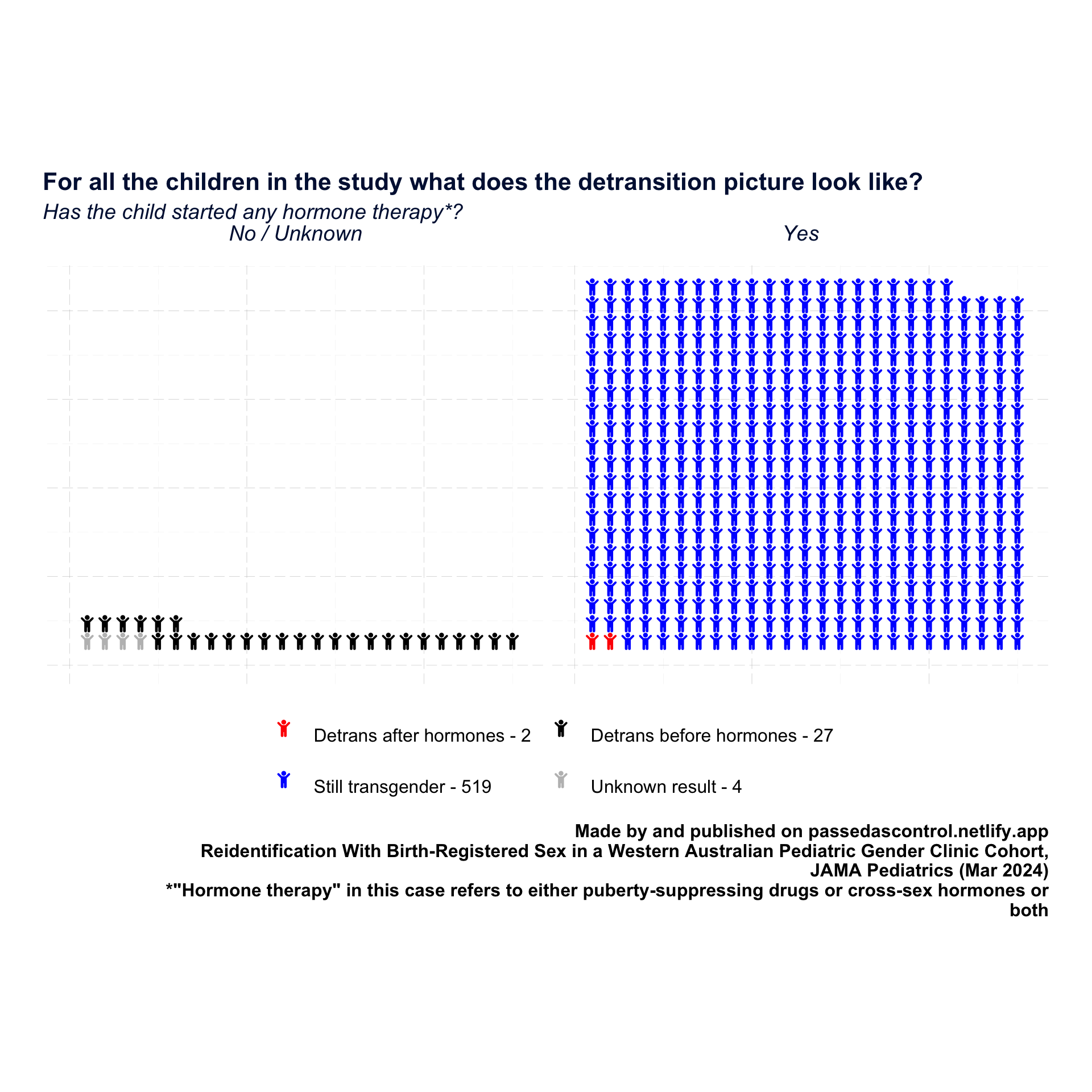
Visualizing a detransition study
TL;DR
The figure below shows illustrates how low the rate of detransition is according to one study: For those kids who started any kind of hormonal treatment, 2 ceased to identify as trans, whereas 519 continued to do so. That effectively means that for every kid who “detransitioned” in this group, there were 259 kids who didn’t (a detransition rate of 0.39 % ).
Figure 0 The study also tries to address a common objection to of detransition studies, which is that detransitioners are less likely to report back into the study or system monitoring them. The study includes the number of kids for whom the referral to the clinic was closed with no knowledge (4). Naturally, this study still has its own limitations, especially considering the need for long-term follow-up, but every study has limitations, especially in academic fields where humans are the subject matter.
Why is visualizing (de)transition hard?
Short answer:
It’s complicated.
Long answer:
What does “detransition” even mean?
When explaining scientific research, you are at the mercy of the public’s understanding of the concepts you’re working with, be it effectiveness of heart pain medication or arctic ice levels. Add the fact that the topic you’re examining is extremely politicized and the task of simplification becomes even more pressing. Just for the purposes of this post, take the following definitions:
- trans youth/minor - someone under the age of 18 who does not identify with the gender corresponding to their gender assigned at birth. E.g. in the case of a trans girl, she is a girl who was assigned the gender of “boy” at birth
- hormonal treatment / gender-affirming hormone treatment (GAHT) - prescribed hormonal medications (which may come in the form of puberty blockers or cross-sex hormones for those over 16)
- AGAB / AMAB / AFAB - assigned gender at birth / assigned male at birth / assigned female at birth
- referral - the case where a patient is sent by a medical professional to the pediatric clinic in this study for assessment and possible treatment for gender dysphoria. The study considers “closed” referrals, which is when a final state for the referral has been reached, e.g. either the patient is receiving consistent treatment and has been discharged, has had the assessment and it has been decided that treatment is not suitable, the patient received treatment but has stopped OR the clinic has lost contact with the patient and has had to close the referral.
- detransition - in this paticular case, (to follow the wording of the study), detransition occurs when a person reidentifies with their gender assigned at birth. So in the case of a formerly trans boy detransitioning: they were assigned girl at birth, identified as a boy, and then ceased to identify as a boy but reidentify as a girl. The quantity and proportion of youth doing so is the main variable being observed. Lastly, people often conflate detranstion with “(transition) regret”, which is the case where a person has undergone any form of transition and has come to regret it. We’re not measuring regret here, and even if we were, the two concepts are not totally overlapping, as there are people who detransition without regret and those who carry on transitioning despite regretting (see other linked study on regret from the Trans Youth project).
The definition just above has some limitations. Here’s a couple:
- the study does not track transition beyond a binary state of AGAB vs not-AGAB. Inherent in the study is the idea of an identity switch that can only flip back and forth between the assigned gender and something other than it. For instance, an AFAB youth who identifies as a boy for a period of time and then identifies as non-binary would not be shown in any way in the data. That change from trans boy to non-binary is not a detransition but it is an example of retransition, which is the broader class that contains detransitions as a subgroup.
- The study doesn’t disaggregate by motivating factors for detransition. This is important because while a minor may start to reidentify with their AGAB after reflection and some soul-searching that leads them there, it’s also possible for a minor to feel pressured to detransition due to societal factors or family pressure.
I’ll come to other studies in future that explore motivating factors behind detransition and also the limited available data on re-transition that isn’t detransition.
How well have these children been kept track of?
The first question that gets asked about a lot of detransition studies is how many patients are there for whom we don’t know the outcome? E.g. how can we know that the treatment was effective when people are dropping out of the study or have not been accounted for? A common counter argument to the evidence around detransition rates is that studies have attrition rates - they lose participants over time, for a variety of reasons. This clinic’s study is higher quality than most since it actually includes the number of kids for whom the referral was closed with no knowledge of the reason (4 kids to be precise). Moreover, figure 0 shows all these as well as those who ceased to id as trans before commencing any treatment / were not granted it, showing that, even in a cohort that is predisposed to self-selection for treatment, there is still some filtering and pre-selection happening before accessing GAHT (Gender Affirming Hormone Treatment). GAHT for minors is not a free-for-all, nor is it a risky decision. According to this study, the actual detransition post-starting GAHT is <1.0%. The main limitation of this study is the lack of data on long-term follow-up with the patients,
Hypothetical case of attrition rate and why it matters
Suppose I end with a sample of 100 minors, 99 of whom carry on their treatment, and 1 stopped, then we’d put forward a detransition rate of 1%. But imagine that originally the cohort started off with 150 people, but we don’t know what happened to that last 50 - they either stopped replying to our attempts to contact them or stopped attending clinic appointments. Each one of those 50 left could have either carried on with gender-affirming hormonal treatment or they could have stopped. We can’t say it’s equally likely because intuition and domain expertise would indicate that people who stop contacting their clinic have some causal connections in common with those who stop treatment. So it’s plausible to suspect a significant number of those 50 would have detransitioned anyway, and we can’t make an honest statement about the rate of detransition with such a high attrition rate. Conversely, we can’t say that all 50 would have, because we just do not know. Every large study will have drop outs, for many reasons, not all of them tied to the effectiveness of the treatment - e.g. some cases will just be plain statistical noise, like a patient moving country or state.
Now, in my hypothetical above, the attrition rate was about 33%, a third. See figure 1 (“Referral Closures Compared”) to see how this study compares.
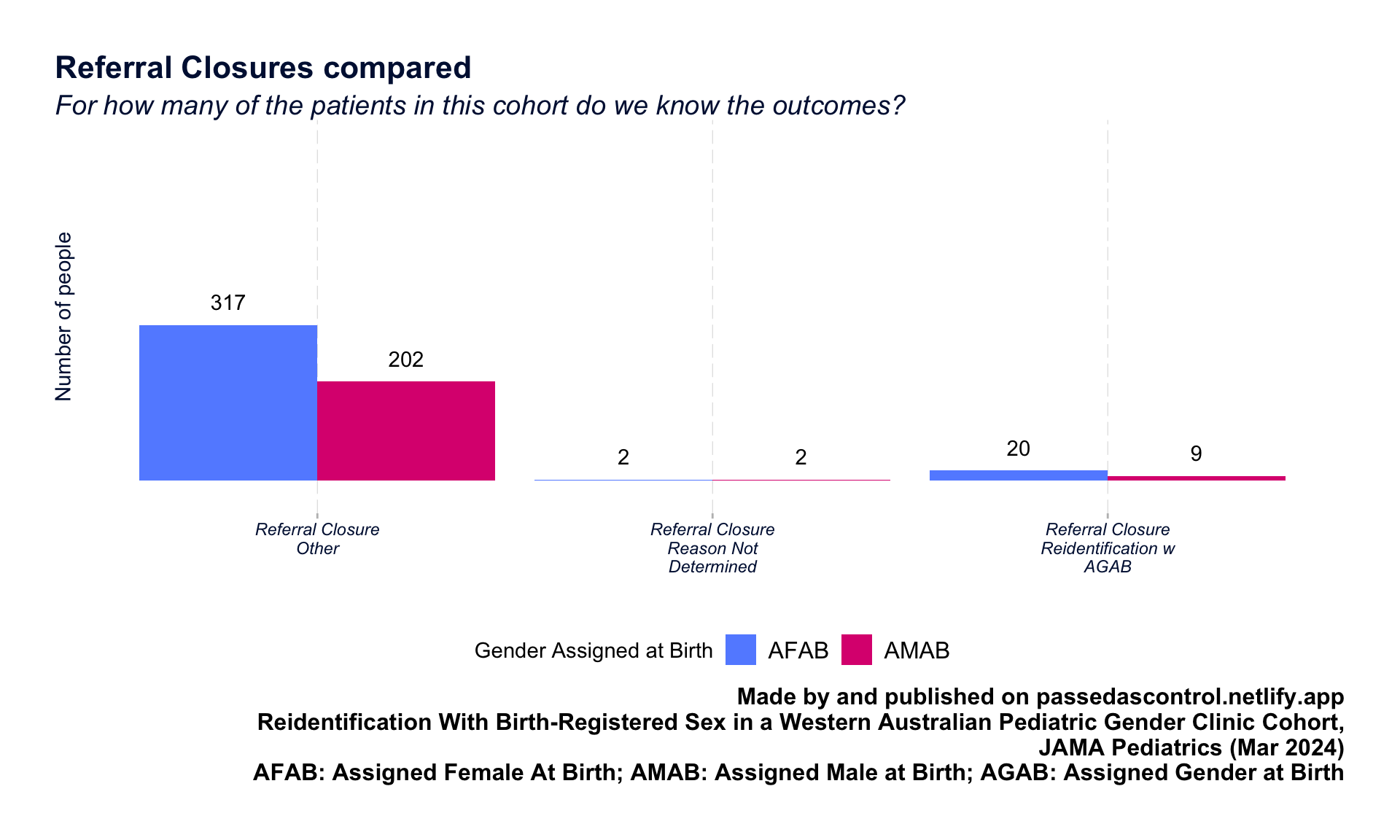
Figure 1
These are the raw numbers, broken down by the sex assigned at birth. So, for the AFAB children, we know the outcomes for 337 of them, and there are 2 whose outcomes are unknown. 20 of the 337 had their referral closed because they reidentified with their sex assigned at birth. Note that we haven’t even looked at detransition rates yet - we’re just assessing how many people the study lost track of. This is, for all intents and purposes, a very small number. Certainly nothing compared to our hypothetical example. In case anyone wants to know those figures as percentages, see figure 2 below.
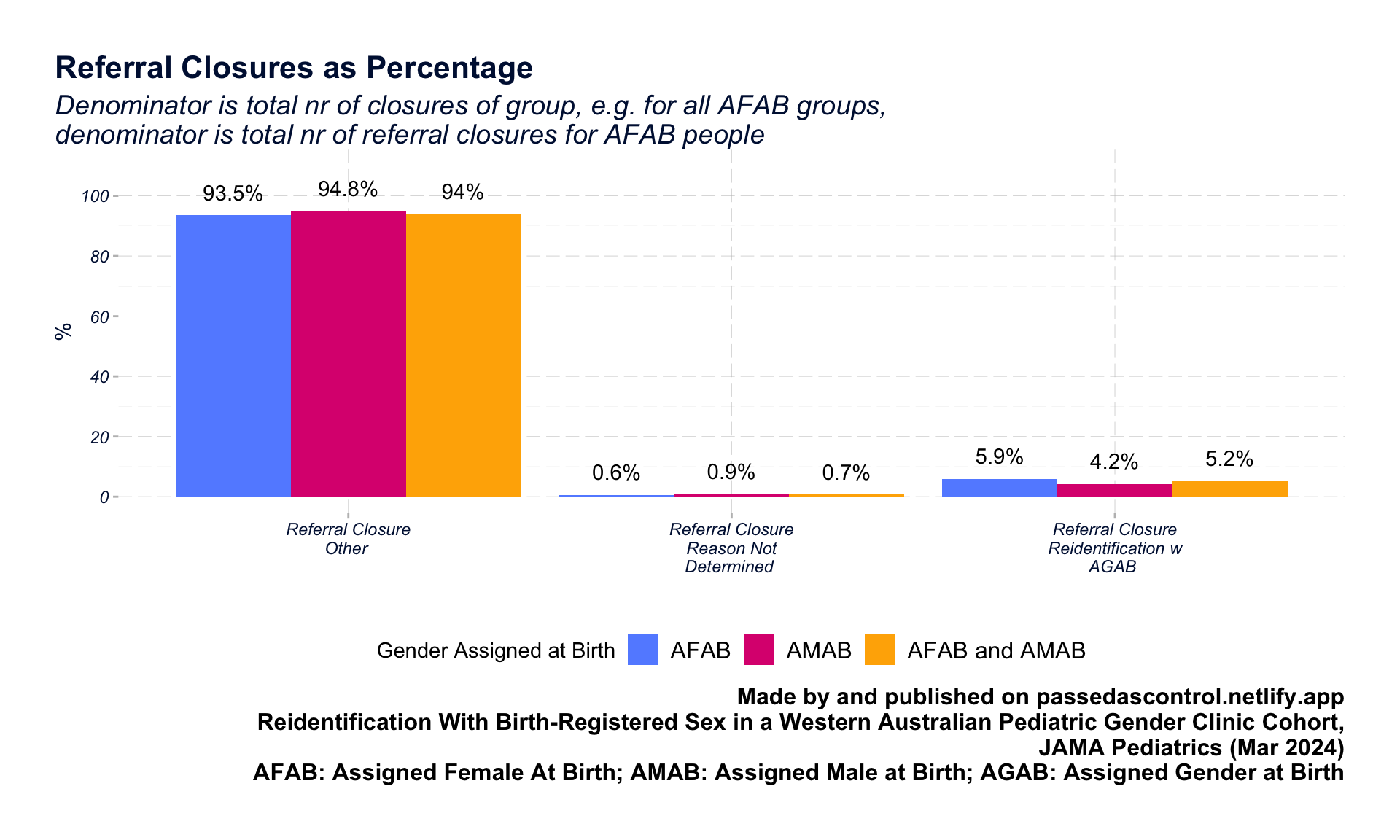
Figure 2 - For extra clarity, I’ve included the total percentages too. Again, looking at the middle group, note that we’re dealing with an attrition rate of less than 1%.
Now most people (for reasons that are somewhat understandable, emphasis on the “somewhat”), choose to focus on the group on the right and determining how worthwhile the intervention is based just on that number. Assuming good faith on their part, this is done on the basis that we should minimize harm by minimizing the number of people who regret the treatment. It’s a short-sighted moral view because it doesn’t take into account what proportion benefited from the treatment and how many would likely suffer if the treatment was taken away.
So, what was the “detransition rate”?
So, looking at just those in the study for whom we have clear outcomes (who are the vast majority in this study, about 99.2% of the study participants), what did the rest of the process look like for them?
Well, once again, again, it’s not as simple as a single, simple fraction. Here is the journey that the minor went through in during this study:
- First they have be referred to the clinic.
- Then they are given an assessment of their gender dysphoria symptoms, talked thoroughly through what hormone blockers and gender affirming hormones will do, alongside their parent / carer / guardian.
- After assessment is completed and consent is given from all involved groups (parents, prescribing doctor, and most importantly, the child), they begin treatment with puberty-suppressing hormones, with or without cross-sex hormones (depending on their age).
Now the study does not provide information on detransition rates at every single step in between. All it does is give us figures for how many people went through assessment, who stopped their journey there (“Detrans before hormones”), and out of those, who carried on with treatment (“Still trans”) and who stopped later (“Detrans after hormones”). These proportions are shown in figures 4 and 5.
Below is a simple waffle chart representing each individual child in this study, including the ones whose outcomes could not be determined:
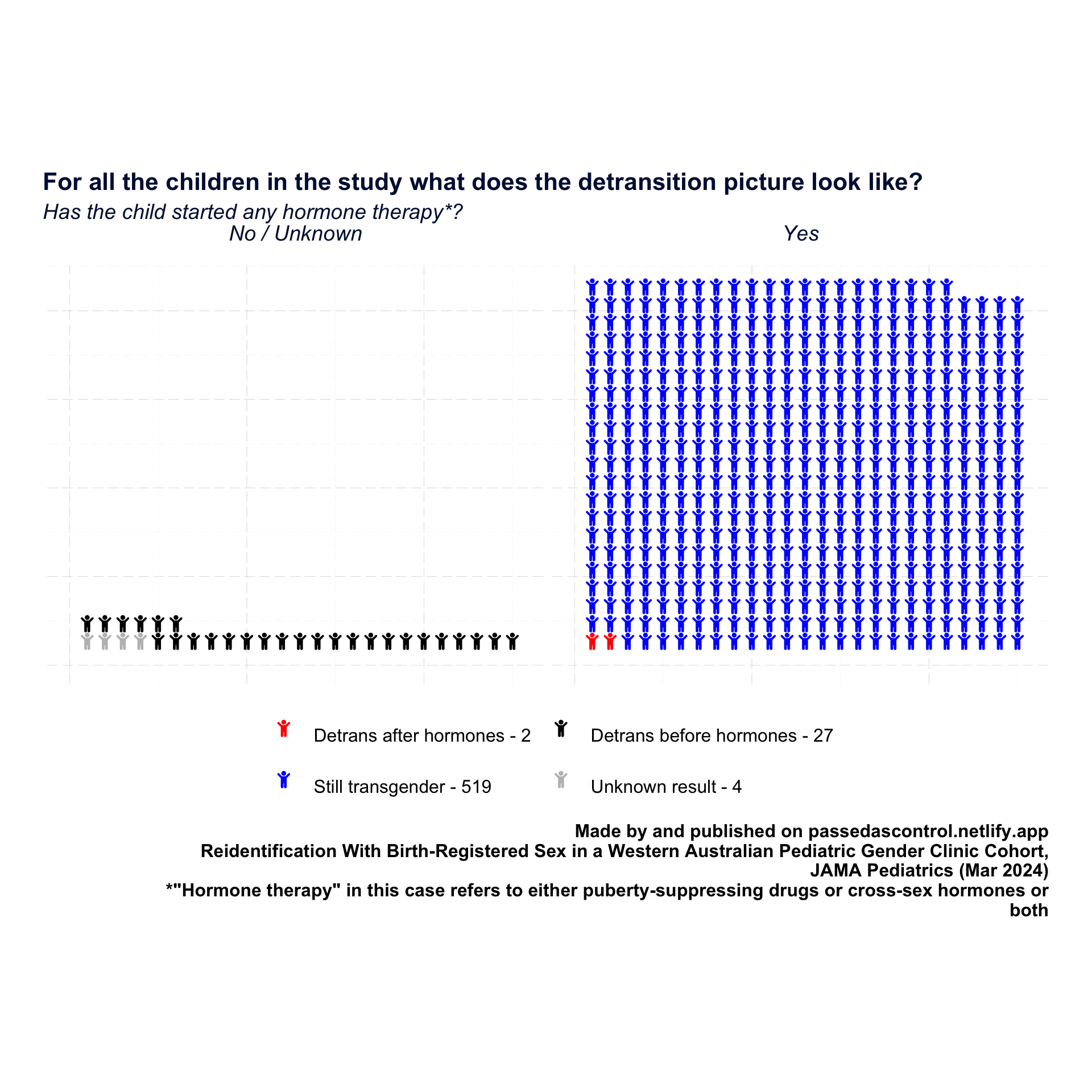
Figure 3
Sometimes people struggle with conceptualizing large numbers, so I’ve redrawn these stats below in figure 4 but for every 100 children.
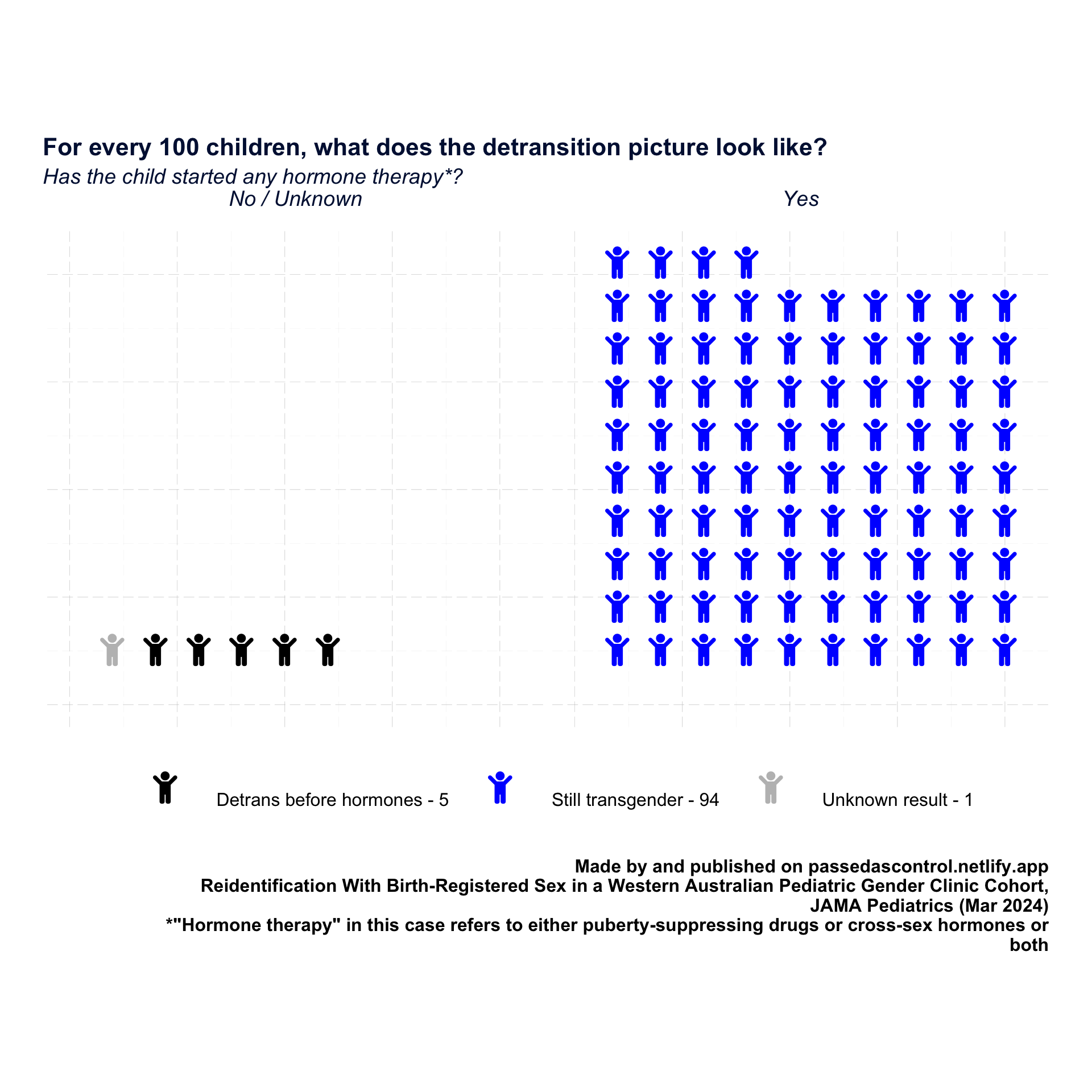
Figure 4
So, that is to say, that for every 100 patients, we’ve lost track of 1, we’ve not started any treatment for 5, and 94 are carrying on with treatment.
Amazingly, if you went through just 100 children going through this clinic, you would likely not encounter one single detransitioner.
Now of course, this is rounded down to 100, which obscures the detrans picture slightly. What does that look like if we took the proportions and scaled it up to 1000 children?
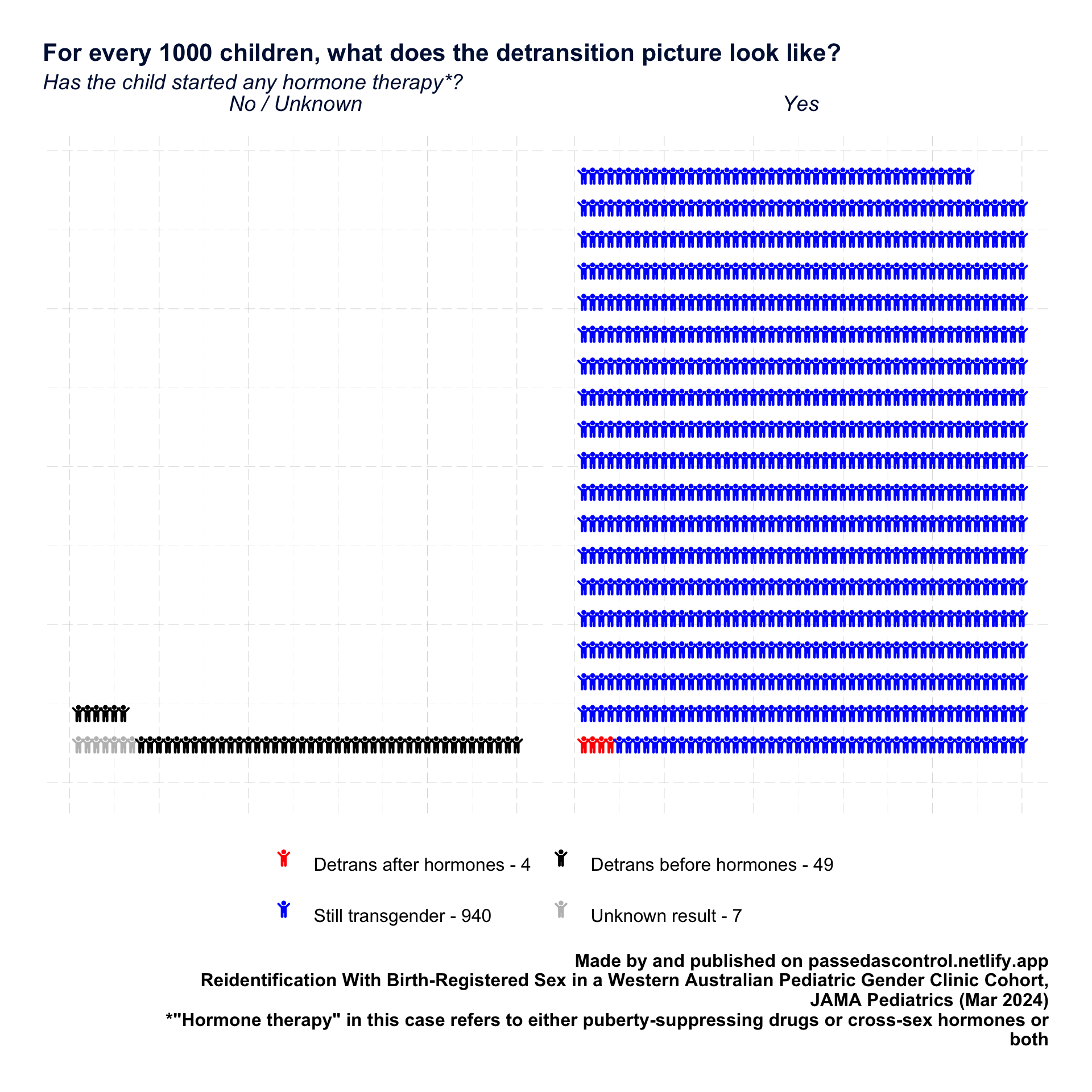
Figure 5
Again, for every 4 detransitioners who had already started hormone therapy, there are 940 carrying on treatment.
For every 1 child who started hormones and then wanted to stop, there were 240 children who did not want to stop.
Concluding remarks
This is just one of many studies I intend to visualise. I appreciate that this type of study and online disagreement about it is so increasingly commonplace that posting about it feels like spitting into the rain. But I do believe that there is some good to be achieved from visualising data that is constantly scrutinized and misunderstood.